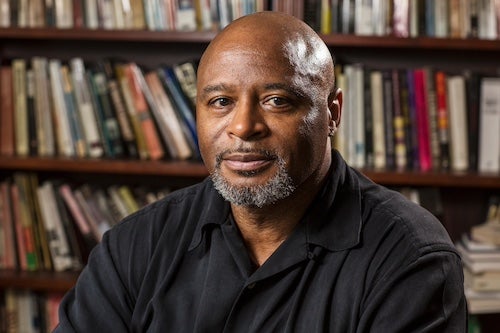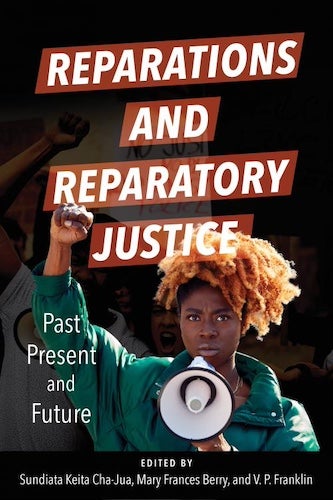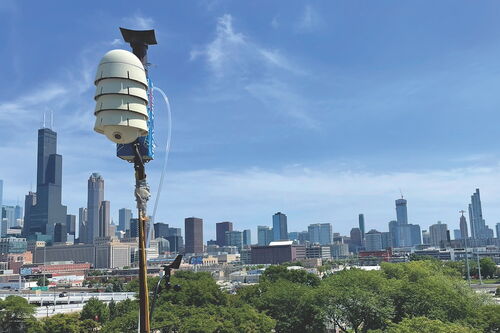Why is the reparations movement gaining momentum in the U.S.?

The call for reparations for people of African descent to compensate for slavery has a long history, but it has been discussed more broadly and gained support in recent years. Illinois, California and New York have established commissions to examine how to address the repercussions of slavery and racial discrimination, and several cities have done so as well. Last year, Evanston, Illinois, approved housing assistance to address past housing discrimination. Some higher education institutions, including Georgetown University, also have established reparations funds. Sundiata Cha-Jua, a University of Illinois Urbana-Champaign professor of history and of African American studies, is the co-editor of “Reparations and Reparatory Justice,” published this month by the University of Illinois Press. He spoke with News Bureau arts and humanities editor Jodi Heckel.
What are reparations, and why is the reparations movement gaining momentum now?
Reparations are policies, procedures and practices that seek to compensate, repair, and restitute individuals, ethnicities/nationalities, or communities for exploitation, oppression, abuse, and genocide.
In 2000, 67% of Black people and 4% of white Americans supported reparations. By 2022, 77% of Black people and 18% of white people did. The Black reparations movement in the U.S. is growing because it has become apparent that the U.S. political and corporate elites have retreated from a commitment to racial justice.
As African Americans’ socioeconomic position worsened over the course of the 21st century, police killings took more heinous expressions, the doors to higher education began to close and Black people found themselves fighting to maintain access to the vote, they have come to see reparations as the only policy that can alleviate their oppression.
Politically, some examples include legislation that has made it harder to vote; constriction of home rule in majority Black municipalities such as Detroit, Michigan, and Jackson, Mississippi; and the introduction of repressive antiprotest laws that criminalize and increase penalties for engaging in protest.
Economically, as the study of wealth disparities superseded studies of income, African Americans became more aware of the depth of racial inequalities and the role government played in creating, exacerbating and maintaining a racially stratified economic system.

The reparations movement is not only about slavery. What are some of the other circumstances for which it is seeking compensation?
Enslavement was a particular system of anti-Black racial oppression. It was supplanted by one based on tenant farming, apartheid (segregation) and racial terrorism in the forms of lynching and organizing racial pogroms or so-called “race riots.” This later system of Black labor exploitation, political disfranchisement, social ostracism, and violent repression lasted another century. It was replaced by the current oppressive racial order.
The post-enslavement social systems continued the exploitation, exclusion and totalitarian subjugation of African Americans in every institution; for example, redlining — the herding of Black people into specific neighborhoods that suffered from the health hazards of environmental racism, underdeveloped infrastructure, poor municipal services, food deserts, substandard housing and underfunded schools. Reparations seeks redress and reparatory justice from all governmental agencies, at the local, state and federal levels, and from corporate entities that inflicted, benefited or profited off Black people’s impoverishment and immiseration.
While direct monetary compensation is part of the call for reparations, the types of restitution that the reparations movement is seeking are far broader. What are some of the other kinds of reparations being discussed?
Various authors in “Reparations and Reparatory Justice” and the “Black Manifesto” issued by James Forman and the Black Economic Development Conference in 1969 call for first-time home buyer programs; tuition-free higher education; endowments for historical and cultural institutions; funding of a national program to infuse Black historical knowledge into the K-12 public schools; funding historical markers and monuments; roots journeys to Africa; repatriation to an African or Afro-descendant majority nation-state; the creation of a land bank to reacquire land stolen through ethnic cleansing and to purchase land to create majority Black communities; and building cooperatively owned communication media in communities with significant Black populations.
Within the reparations movement, some call for a U.N.-supervised plebiscite in which African Americans would determine their future. Others propose a new political relationship with the U.S. modelled after that of the Indigenous nations — a “government to government” relationship in which African American individuals would hold joint citizenship in three entities: African America, the U.S. and the state they live in. African American majority areas, like Indigenous communities, would control a vast array of governmental functions such as education, policing, health care, infrastructure and housing development, public building construction, and telecommunications.
Are there examples of reparations programs that can be used as a model?
Germany provides compensation to Jewish individuals for physical injury, health impairment, discriminatory restrictions of human and civil rights, and economic and professional discrimination. It also addresses issues of cultural repair through memorials, museums, research, and education. In addition to recompense, repair, and restitution to individual victims of the Holocaust, Germany also compensates Israel. Moreover, it has taken steps to minimize a reoccurrence of genocide. In Germany, it’s a crime to deny the Holocaust and to make or disseminate hate speech, in person or online.
Some people argue against reparations because those who were enslaved are gone and many people who would be helping pay compensation today are not descendants of families who owed slaves or benefited from the slave trade. What is the response to those arguments?
Presently, 91% of the U.S. Black population consists of African Americans, the direct descendants of Black folk who lived during enslavement. A very small portion of that population are descendants of the quasi-free, those Afro-descendants who were not enslaved persons. The quasi-free lived under restrictive racist legislation and were exploited, disfranchised, ostracized, and subjected to racial terrorism through events such as the 1829 Cincinnati race riot and the 1863 New York draft riots. Enslavement was but one anti-Black racial control system practiced in the U.S. An Afro-descendant person who migrated here entered a society that indiscriminately discriminated against Black people.
Will this movement encourage other marginalized groups to seek compensation for past oppression?
Yes. Other oppressed ethnicities/nationalities, women, and sexual communities have historically followed the lead of the Black liberation movement. They articulated similar demands and adopted similar tactics in their struggles to obtain justice or self-determination








